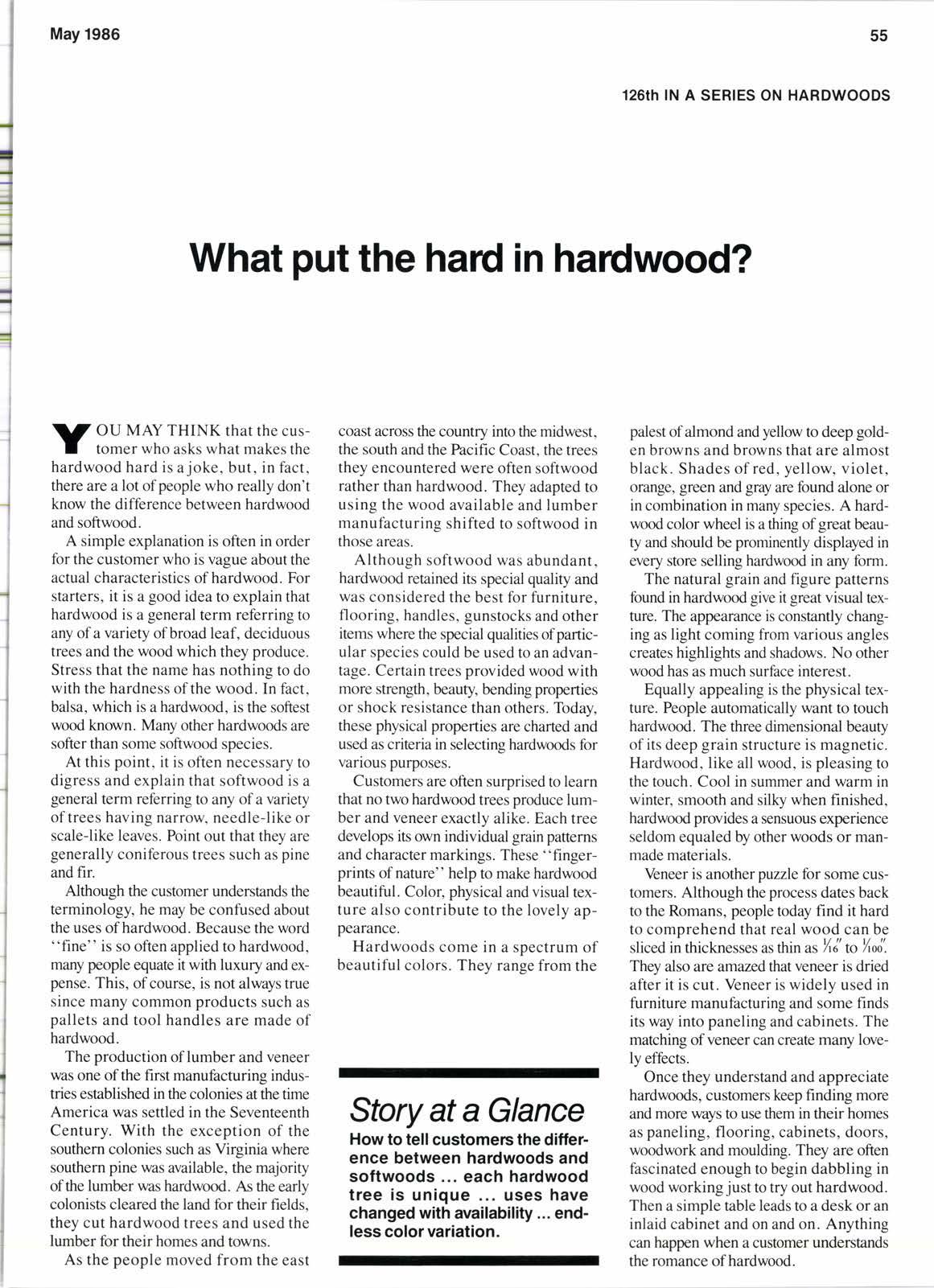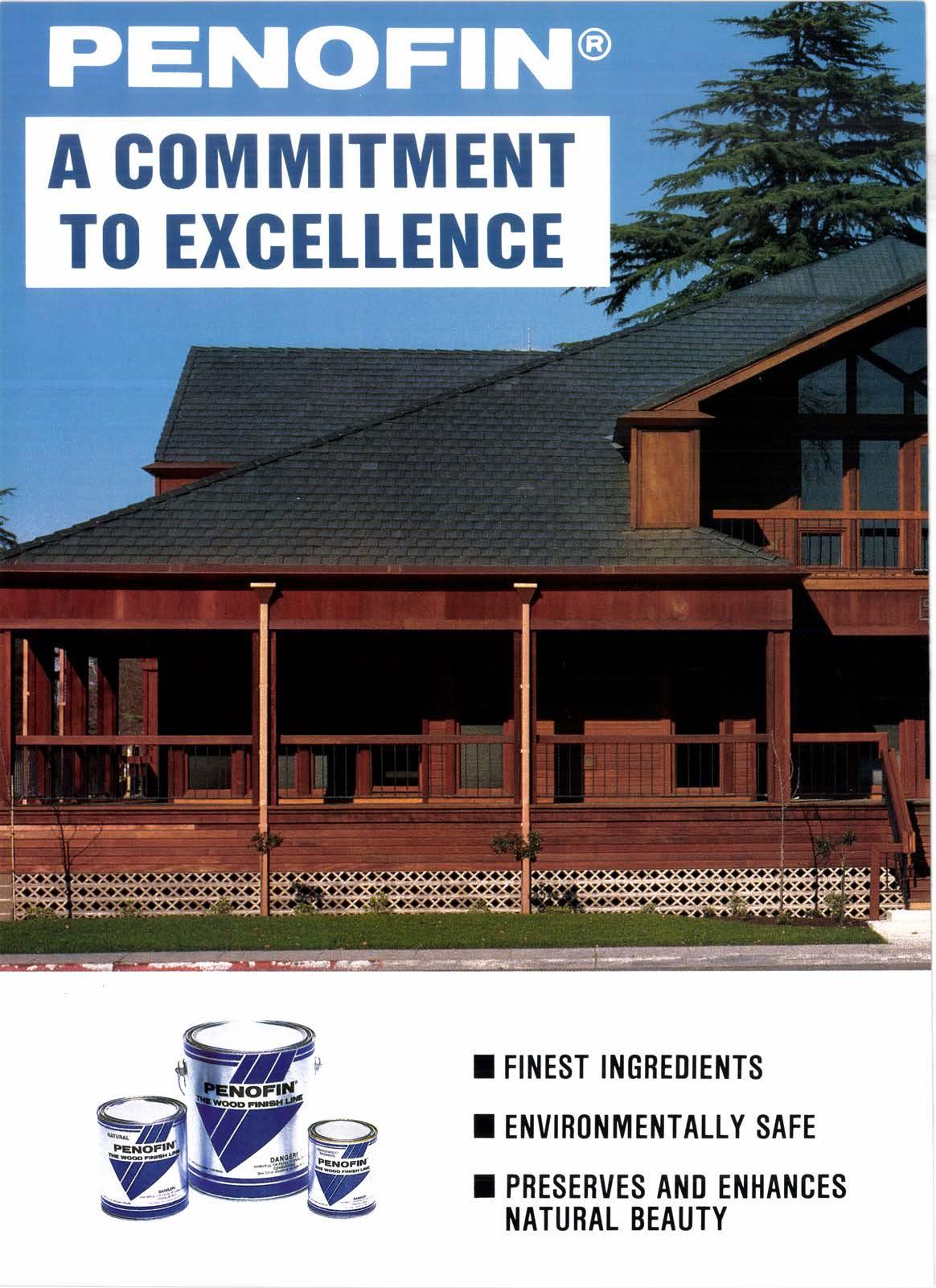
3 minute read
What put the had in hadwood?
OU MAY THINK thAt thE CUStomer who asks what makes the hardwood hard is ajoke, but, in fact, there are a lot of people who really don't know the difference between hardwood and softwood.
A simple explanation is often in order for the customer who is vague about the actual characteristics of hardwood. For starters, it is a good idea to explain that hardwood is a general term referring to any ofa variety ofbroad leaf, deciduous trees and the wood which they produce. Stress that the name has nothing to do with the hardness of the wood. In fact, balsa, which is a hardwood, is the softest wood known. Many other hardwoods are softer than some softwood species.
At this point, it is often necessary to digress and explain that softwood is a general term referring to any ofa variety oftrees having narrow, needle-like or scale-like leaves. Point out that they are generally coniferous trees such as pine and fir.
Although the customer understands the terminology, he may be confused about the uses ofhardwood. Because the word "fine" is so often applied to hardwood, many people equate it with luxury and expense. This, of course, is not always true since many common products such as pallets and tool handles are made of hardwood.
The production oflumber and veneer was one of the first manufucturing industries established in the colonies at the time America was settled in the Seventeenth Century. With the exception of the southern colonies such as Virginia where southern pine was available, the majority of the lumber was hardwood. As the early colonists cleared the land for their fields, they cut hardwood trees and used the lumber for their homes and towns.
As the people moved from the east coast across the country into the midwest, the south and the Facific Coast, the trees they encountered were often softwood rather than hardwood. They adapted to using the wood available and lumber manufacturing shifted to softwood in those areas.
Although softwood was abundant, hardwood retained its special quality and was considered the best for furniture, flooring, handles, gunstocks and other items where the special qualities of particular species could be used to an advantage. Certain trees provided wood with more strength, beaury, bending properties or shock resistance than others. Today, these physical properties are charted and used as criteria in selecting hardwoods for various purposes.
Customers are often surprised to learn that no two hardwood trees produce lumber and veneer exactly alike. Each tree develops its own individual grain patterns and character markings. These "fingerprints of nature" help to make hardwood beautiful. Color, physical and visual texture also contribute to the lovely appearance.
Hardwoods come in a spectrum of beautiful colors. They range from the
Story at a Glance
How to tell customers the difference between hardwoods and softwoods each hardwood treeisunique uses have changed with availability... endless color variation.
palest of almond and yellow to deep golden browns and browns that are almost black. Shades ofred, yellow, violet, orange, green and gray are found alone or in combination in many species. A hardwood color wheel is a thing of great beauty and should be prominently displayed in every store selling hardwood in any form.
The natural grain and figure patterns found in hardwood give it great visual texture. The appearance is constantly changing as light coming from various angles creates highligh$ and shadows. No other wood has as much surface interest.
Equally appealing is the physical texture. People automatically want to touch hardwood. The three dimensional beauty of its deep grain structure is magnetic. Hardwood, like all wood, is pleasing to the touch. Cool in summer and warm in winter, smooth and silky when finished, hardwood provides a sensuous experience seldom equaled by other woods or manmade materials.
Veneer is another puzzle for some customers. Although the process dates back to the Romans, people today find it hard to comprehend that real wood can be sliced in thicknesses as thin as Yrl' :o'ld'. They also are amazed that veneer is dried after it is cut. Veneer is widely used in furniture manufacturing and some finds its way into paneling and cabinets. The matching of veneer can create many lovely effects.
Once they understand and appreciate hardwoods, customers keep finding more and more ways to use them in their homes as paneling, flooring, cabinets, doors, woodwork and moulding. They are often fascinated enough to begin dabbling in wood working just to try out hardwood. Then a simple table leads to a desk or an inlaid cabinet and on and on. Anything can happen when a customer understands the romance of hardwood.










